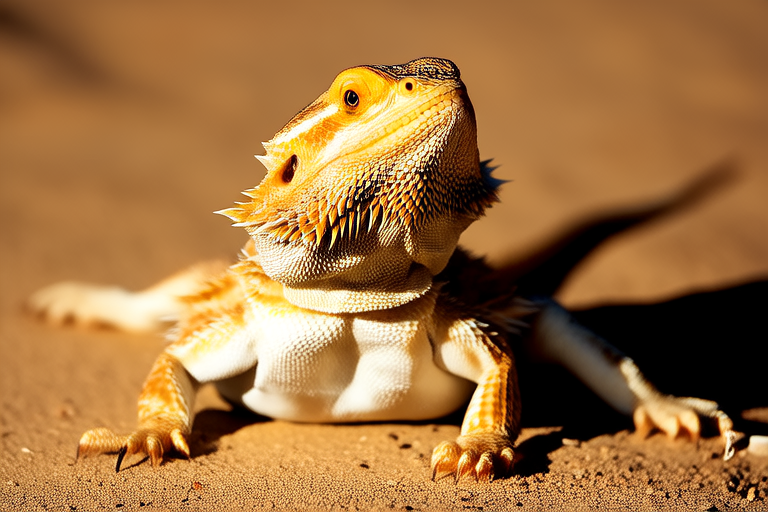Top 10 Secrets for Keeping Your Bearded Dragon Happy and Healthy
Bearded dragons, native to Australia, have become increasingly popular pets due to their docile nature and relatively low maintenance. However, ensuring they thrive requires more than just basic care; it involves understanding their specific needs. This article reveals ten secrets that will help you keep your bearded dragon happy and healthy.
Secret 1: The Perfect Diet
Diet is crucial for any pet, but especially so for bearded dragons. Their meals should consist of a mix of vegetables, fruits, and insects. Dr. Emily Jenkins, a veterinarian specializing in reptiles, recommends feeding them leafy greens like kale, collard greens, and dandelion greens. Fruits can be given sparingly as treats because of their high sugar content. Insects such as crickets, dubia roaches, and superworms provide essential protein. Gut-loading these insects—feeding them nutritious foods before offering them to your dragon—ensures your pet gets optimal nutrition.
Secret 2: Setting Up the Ideal Habitat
The right habitat setup is vital for your bearded dragon’s well-being. A glass terrarium with a secure lid is ideal, providing enough space for them to move around comfortably. Include branches for climbing and basking areas. A substrate that mimics their natural environment, such as reptile carpet or coconut fiber, helps maintain humidity levels without posing ingestion risks.
Secret 3: Lighting Requirements
Proper lighting is essential for maintaining your bearded dragon’s health. UVB light simulates sunlight, aiding in calcium absorption and preventing metabolic bone disease. Full-spectrum lighting should cover at least half of the enclosure, allowing your pet to bask under it. Additionally, a heat lamp provides warmth during colder months or night-time periods when ambient temperatures drop.
Secret 4: Hydration
Hydration is key to keeping your bearded dragon healthy. Although they obtain much of their water from food, offering fresh water daily is important. A shallow dish filled with clean water placed within reach encourages drinking. Some owners mist their dragon’s enclosure lightly every few days to increase humidity and provide another source of moisture.
Secret 5: Encouraging Exercise
Exercise promotes overall fitness and mental stimulation. Provide climbing structures and hiding spots within the enclosure to encourage movement. Regular handling sessions outside the tank also stimulate activity. Remember, active dragons tend to be happier and healthier.
Secret 6: Social Interaction
Bearded dragons are social creatures that benefit from human interaction. Spend quality time with your pet by gently holding and petting them regularly. This bonding process not only strengthens the relationship between owner and animal but also reduces stress for the dragon.
Secret 7: Handling Techniques
Handling your bearded dragon correctly ensures both safety and comfort. Always support its body fully, especially the belly, to prevent injury. Approach slowly and calmly, giving your pet time to adjust. Avoid sudden movements or loud noises which may startle them. With consistent gentle handling, your bearded dragon will learn to trust you.
Secret 8: Health Monitoring
Regular check-ups are necessary to catch potential issues early. Look out for signs of illness such as lethargy, loss of appetite, abnormal stool, or changes in skin coloration. If you notice anything unusual, consult a veterinarian experienced with reptiles immediately. Early intervention can make all the difference in treating conditions effectively.
Secret 9: Temperature Control
Maintaining appropriate temperatures inside the habitat is critical for digestion and metabolism. Use thermometers placed strategically throughout the enclosure to monitor temperature ranges. Typically, the warm end should range between 95-105°F while the cooler side remains around 80-85°F. Nighttime temperatures can safely dip slightly lower.
Secret 10: Common Mistakes to Avoid
Avoiding certain pitfalls prevents unnecessary stress and illness. For instance, overfeeding can lead to obesity, while underfeeding might cause malnutrition. Another common mistake is failing to provide adequate hiding spaces, which can result in increased anxiety. Ensuring proper ventilation and avoiding overcrowding are also important considerations.
In conclusion, keeping your bearded dragon happy and healthy involves understanding its unique dietary needs, creating an enriching habitat, meeting lighting and temperature requirements, promoting hydration and exercise, fostering social bonds, practicing safe handling methods, closely monitoring health, and learning from common mistakes. By implementing these top ten secrets, you’ll ensure your scaly friend enjoys a long, vibrant life full of joy and good health.
